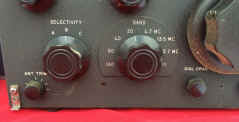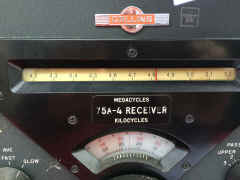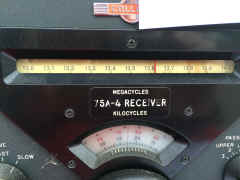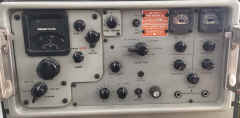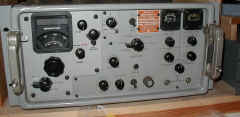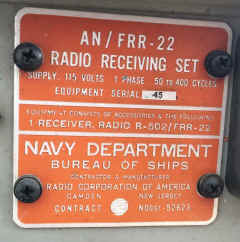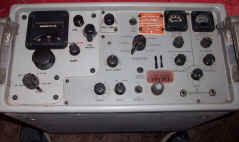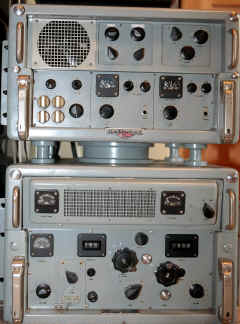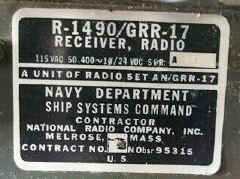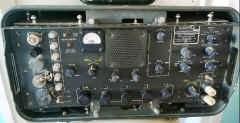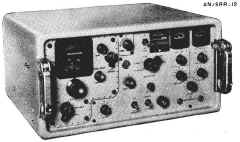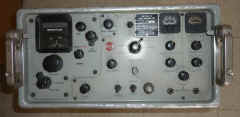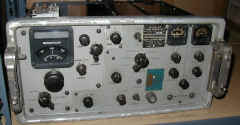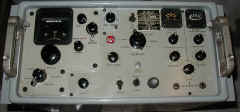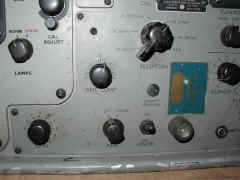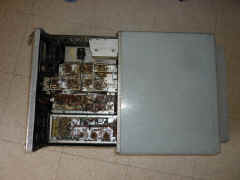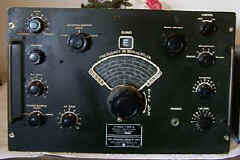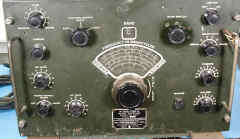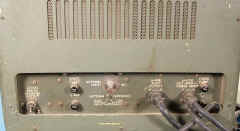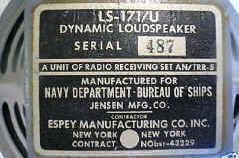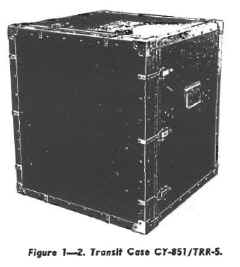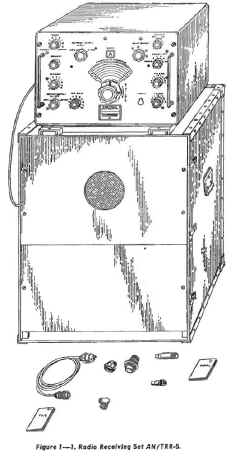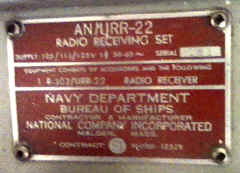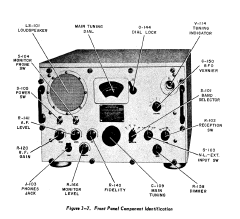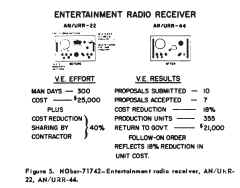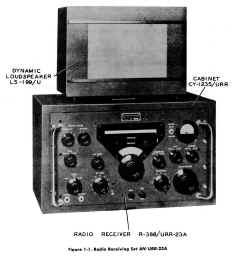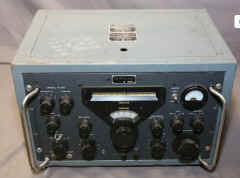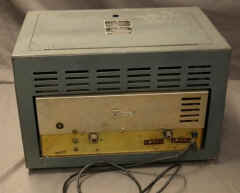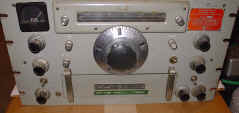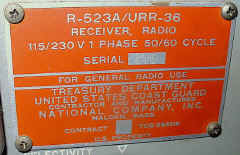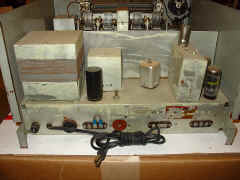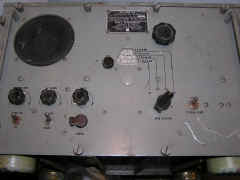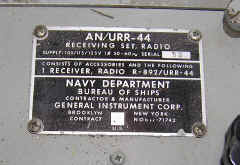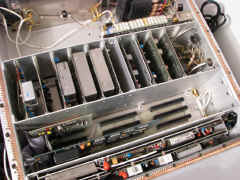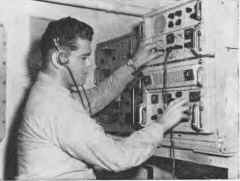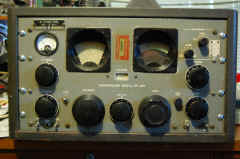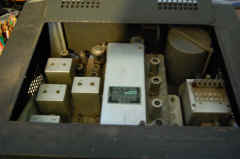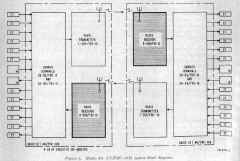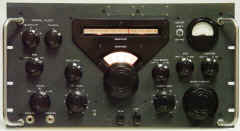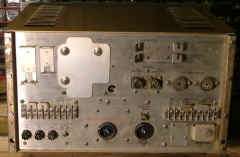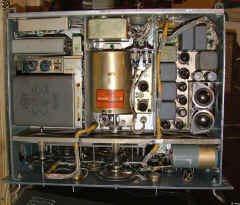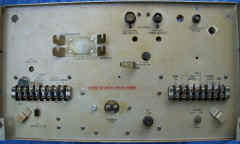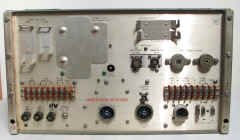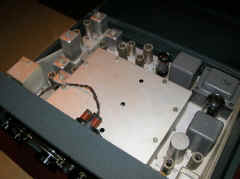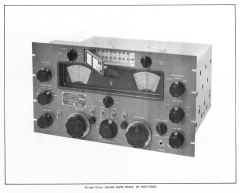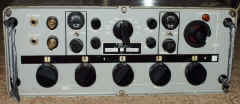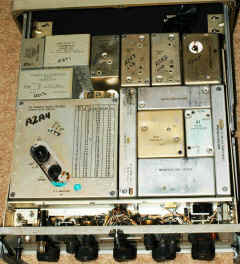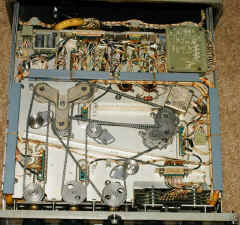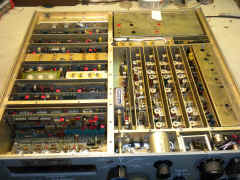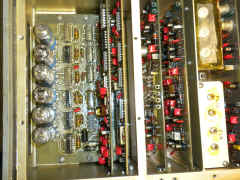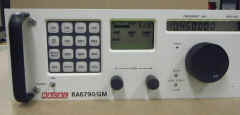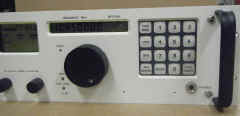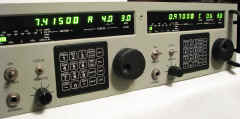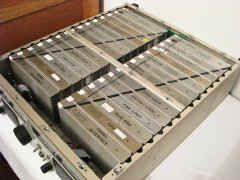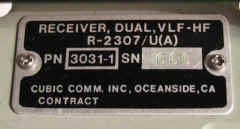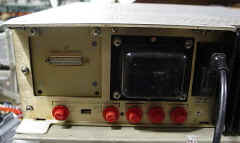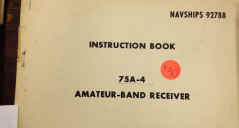HF/MF Receivers
AN/FRR-22
(R-502/FRR-22)
- RCA
- info/photos
- repairing RF transformers
w/ rack mount + EXT OSC input
0.25-8 mc - 29 tubes
NAVSHIPS 92211 - manual
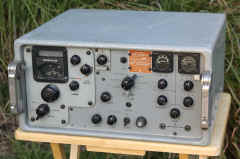
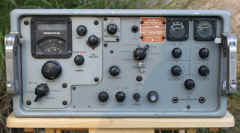
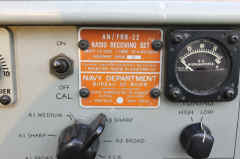
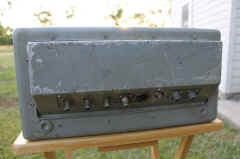
AN/FRR-23
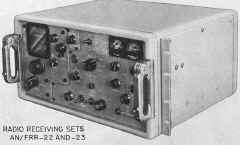
w/ rack mount + EXT OSC input
2-32 mc
29 tubes
NAVSHIPS 92211
info/photosAN/FRR-48(XW-1)
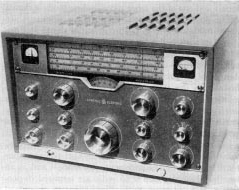
HF DSB/SSB Receiver 2-32 mcPrototype Only
General Electric model XSDR-1
Synthesized, synchronous detection, direct conversion
See this paper for much more info
And this
article by Bill Jones for a history of the development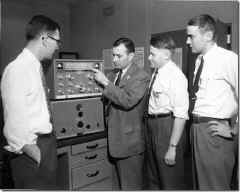
Bill Jones, Dr. John Costas, Roger Swanson, Jack Cunnif

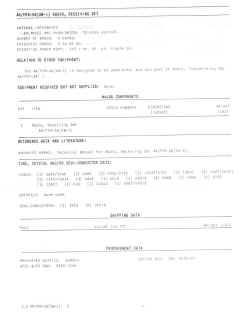
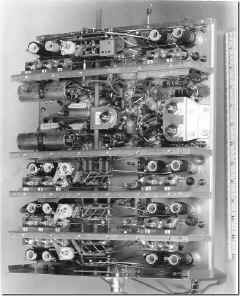
Bottom of RF chassis by Bill Jones
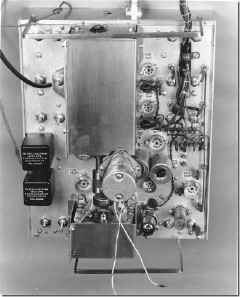
Top of RF chassis by Bill Jones
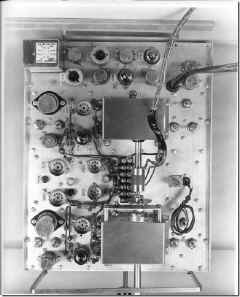
Top of Synthesizer by Roger Swanson
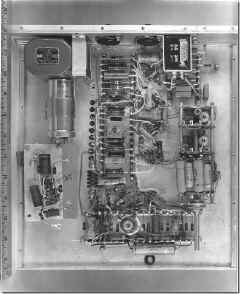
Bottom of Audio, Alpha-Beta and Audio by Jack Cunnif
AN/FRR-59
AN/FRR-59A
AN/FRR-59B
More FRR-59 photos
1.0 kc tuning (59)
0.5 kc tuning (59A,B)
Wadley loop - 65 tubes
Arvin (FRR-59B) diagram
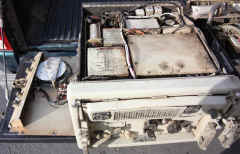
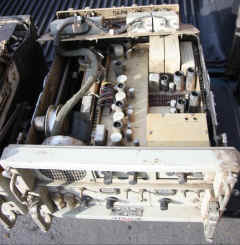
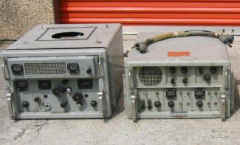
More FRR-59 photos

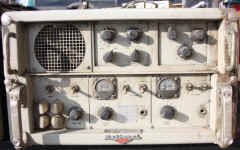

AN/GRR-17
(R-1490/GRR-17)
- USMC - Manuf by National -
- Photos and Info here
- Manual &
photos -
USMC TM-05866A-15
The operating modes are for reception of upper or lower single sideband (A3j), amplitude modulated (A3), continuous wave (Al ), and frequency shift teletype (Fl ) broadcasts. A panel mounted speaker permits signal monitoring. Output terminations are provided for the connection of external teletype equipment, and a headset or other terminal equipment. The receiver frequency stability is one part in 10^7 per day allowing extended operating periods without operator attention.
AN/MRR-2
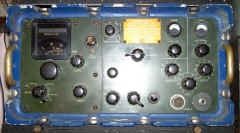
AN/SRR-12 with waterproof case
115vac or 24vdc
- Thanks to Marty for the photos and videos
- higher res photo
- video #1
- video #2
- video #3 - interior
AN/MRR-3
need photo - looks like MRR-2
AN/SRR-13 with waterproof case
AN/SRR-12
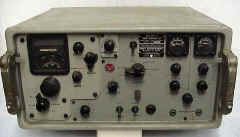
29 tubes
Navships 91875
AN/SRR-13
AN/SRR-13A
(R-441/SRR-13)
2-32 mc, 29 tubes
Navships 91875 - manual pdf
article in Electric Radio magazine
- July 1991 p 4

SRR-13A
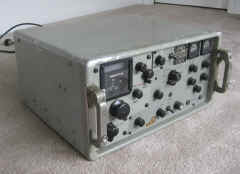
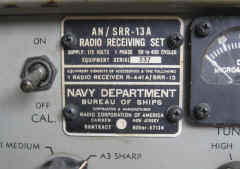
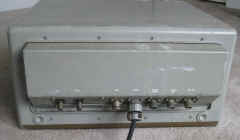
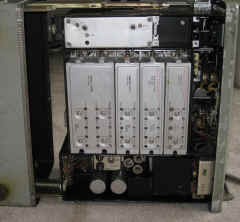
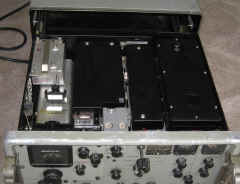
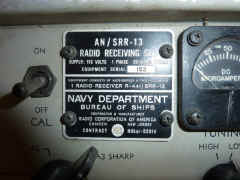
AN/TRR-5
R-366/TRR-5
LS-171/U
CY-851/TRR-5
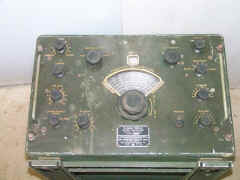
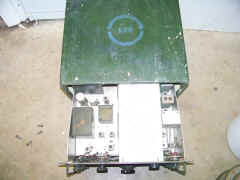
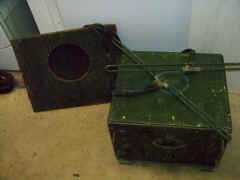
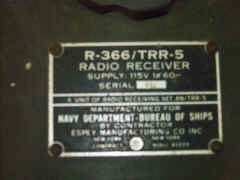
AN/URR-10
(Hallicrafters SX-42)
LS-140/U Loudspeaker
MT-598/U Mounting

AN/URR-22
(R-302/URR-22)
replaces RBO - made by National
NAVSHIPS 92161 - download
Value Engineering -
AN/URR-23
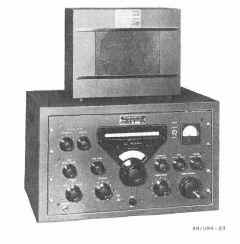
R-381A/URR-23 (Collins 51J-2)
CY-1235/URR cabinet
LS-175/U speaker
Contract NObsr-49134
(15 May 1950)
AN/URR-23A

Collins 51J-3 with MFP and modified antenna input ckt ?
Were all Navy R-388 receivers procured as AN/URR-23A systems?
Click here for R-388 contract info page
R-388 tag showing AN/URR-23A Navy contract number

Contract NObsr-52527
(22 June 1951)
NAVSHIPS 91678 manual
AN/URR-36
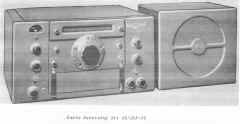
with 4 coils (A-D), & speaker
AN/URR-36A
(R-523A/URR-36)
with 10 coils, xtal calib, speaker & coil storage unit, and rack
Navy Contract NObsr-71193
USCG Contract TCG-39506

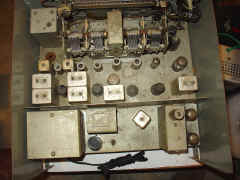
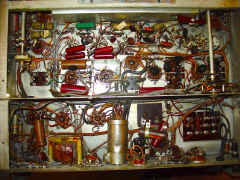
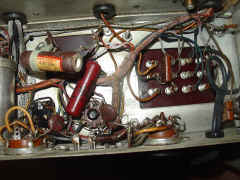
AN/URR-39
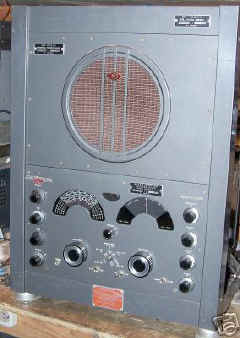
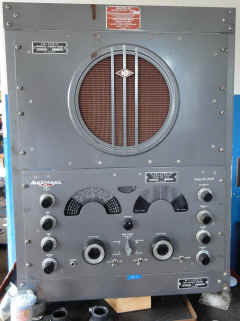
(R-651/URR-39
with speaker (LS-228/U)
& rack mount (MT-1529/U)
50-150kc & 0.54-31mc
standard 47-55mc band replaced with VLF band and bandspread replaced
with 0-200 logging scale
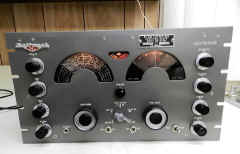
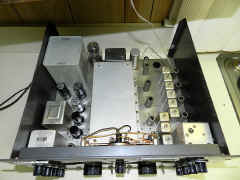

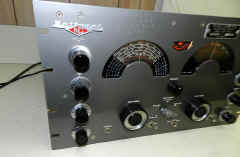
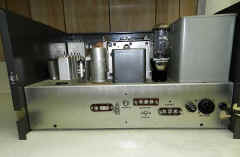
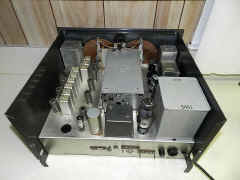
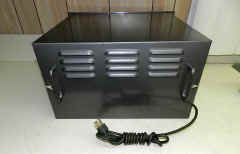
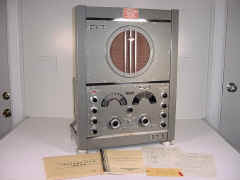
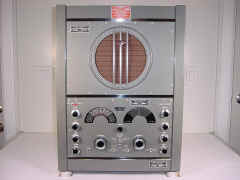
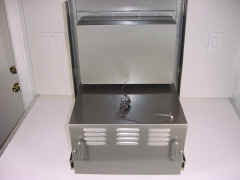

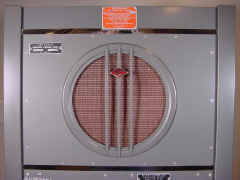
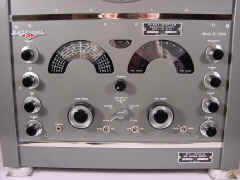
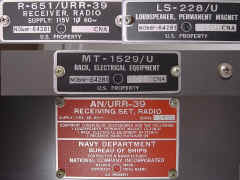
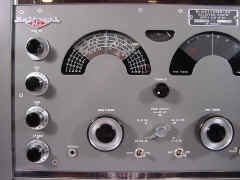
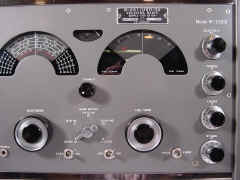
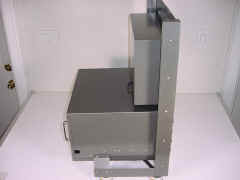
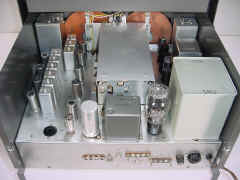
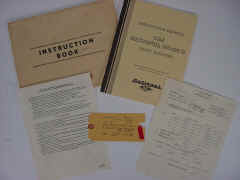
AN/URR-41
AN/URR-41 (XN-1) is designed to intercept signals comprised of five modulations and separate them and prepare them for either aural or visual monitoring. The gain control is designed to provide equal amplitude output signals from the five channels with unequal input signal levels.
2-32 mc, 4 bands, 5 preset channels
receives A2, A3, A9
Manuf by Hoffman
please send email if you have any more info
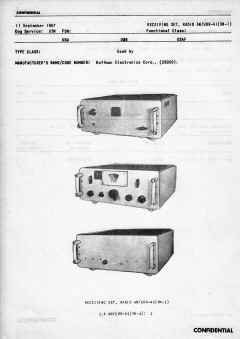
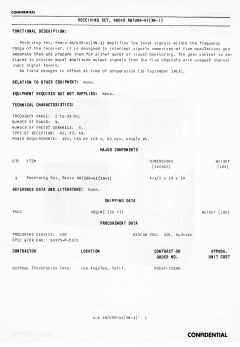
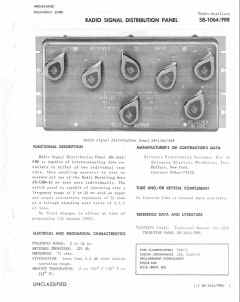
AN/URR-44
(R-892/URR-44)
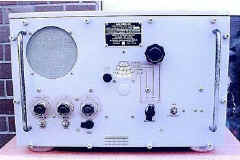
replaces RBO
NAVSHIPS 93316 - download
similar to URR-22

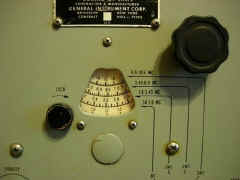
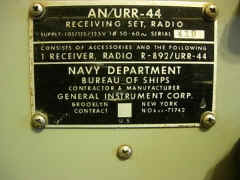
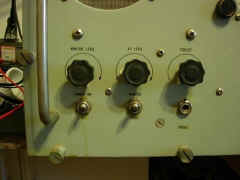
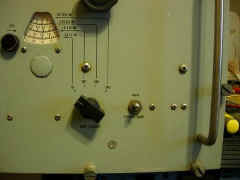
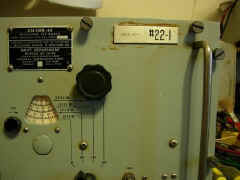
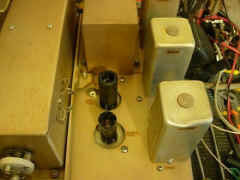
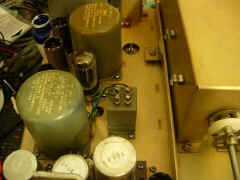
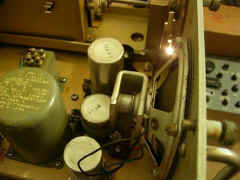
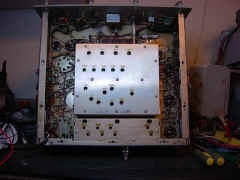
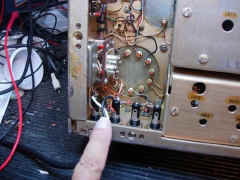

AN/URR-51 ?
need photo
AN/URR-74(V)2
(thanks to Perry W8AU)
5kc-30mc
AM (16 or 6 khz), SSB (3.2 khz), RTTY (1 khz) or CW (.3 khz). There is a mechanical BFO built in that can be adjusted in 10 hz increments using decadic thumbwheels The digital readout is clear and bright and goes to a resolution of 10 hz for precise tuning.
0.3, 1, 3.2, 6, 16 kc bandwidths
Watkins-Johnson
Selectivity of 16 / 6 / 3.2 / 1 / .3 khz
BFO of + or - 8 khz and shown in its own display to the left of the frequency readout
4 Tuning steps
AGC fast / slow / off
AF/S-Meter
115/220 VAC
Digital readout down to 10 hz
Sensitivity of .4uV 16 dB (S+N)/N CW
IF output
RF gain
Headphone and line out jacks
Rack handles
AN/WRR-2
AN/WRR-2A
AN/WRR-2B

upper - AM-2477/URR amplifier - detector
lower - CV-920/URR converter - RF tuner
1.0 kc tuning (2)
0.5 kc tuning (2A,B)
Wadley loop
65
tubes
See FRR-59 block diagrams
More FRR-59 photos
Arvin (2B) diagram
R-274B/FRR
Hammarlund
SP-600-JX-6 - NObsr-52039
SP-600-J-11
- NObsr-52039
SP-600-JX-35 - NObsr-71369
SP-600-JL-24 Special - ?
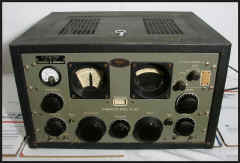
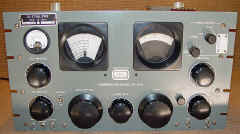
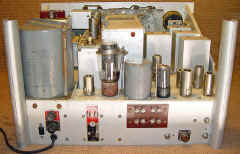
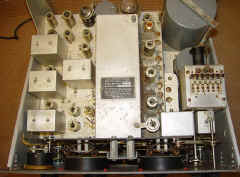
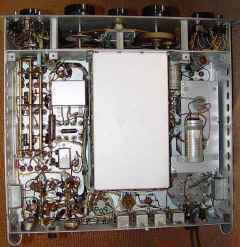
R-274B/FRR "special"
(Hammarlund SP-600-JL-24)
need photo
SP-600-JL-24
NAVSHIPS 91661
SP-600 series info(part of AN/FRC-10A or -10B)
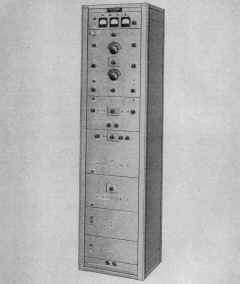
4-28 mc dual channel SSB
- for VF AFSK links
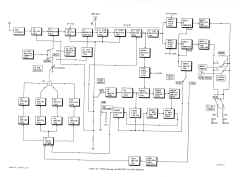
Manual TM 11-780
download pdf version
R-388/URR
Collins 51J-3
NAVSHIPS 91678
TM11-854 / TO16-35R-388-5
Some Navy R-388 receivers were procured as AN/URR-23A systems.
Others were procured under MIPR-881-47159
Does this mean Military Interdepartmental Purchase Request? Please send e-mail if you can
help clarify this - thanks!
R-388A/URR
need photo
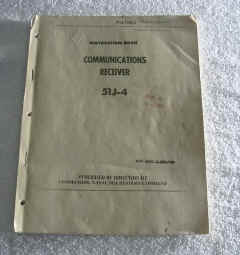
NAVSEA manual
Were any 51J-4's actually labeled as R-388A? What is an R-388B?
Contract NObsr-69046
(16 Nov. 1956)
NAVSHIPS 92324
NAVSHIPS 0967-994-9010
NAVSEA 0967-LP-994-9010
(these are reprints of the Collins 51J-4 manual)
R-390/URR
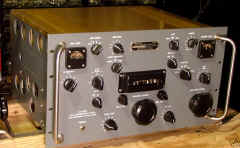
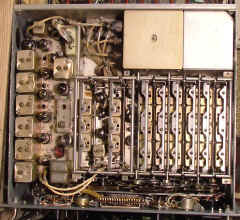
R-390A/URR
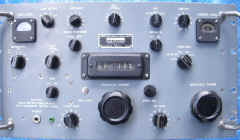
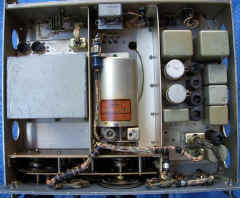
- R-390A FAQ page
- NAVSHIPS Manual & Field Changes
- More R-390A Manuals
- R-390A Contracts and numbers
- R-390A Manufacturing Drawings
- Hollow State News w/ R-390A articles
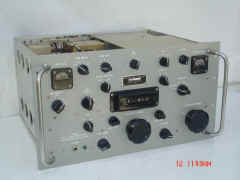
Many Navy R-390A units were modified with a green diode load jack on the front panel (FC 4)
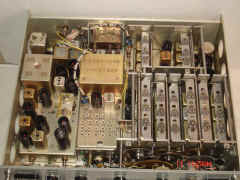
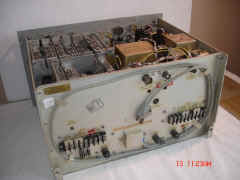
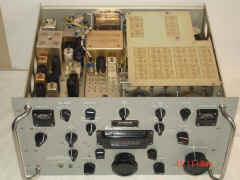
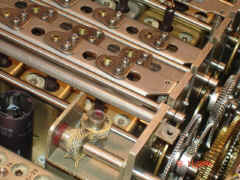

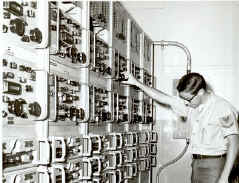
R-391/URR
Auto-tune version of R-390/URR
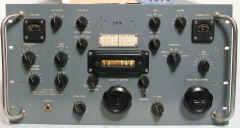
Used by NAVSECGRU only?
(AN/FRA-44 and AN/FLR-7)
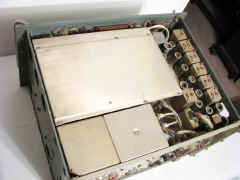
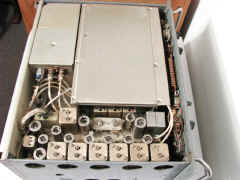
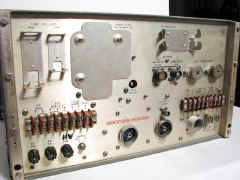
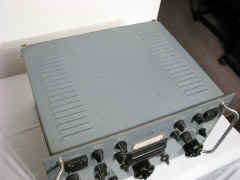
R-450/FRR-28
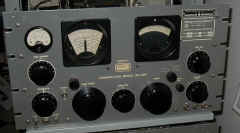
article in Electric Radio magazine
- Sept 2004, p2
R-618/FRR-32
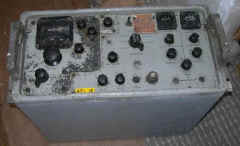
Need better photo
R-825/URR
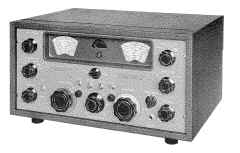
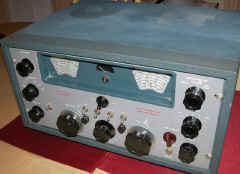
540 kc - 31 mc
R-840/URR
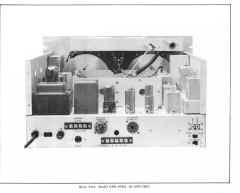
(same as R-825 plus xtal control)
Contract NObsr-71790
540kc-31mc
More photos
manual - NAVSHIPS 93165
R-1051/URR
R-1051A/URR
R-1051B/URR
R-1051C/URR
R-1051D/URR
R-1051E/URR
R-1051F/URR
R-1051G/URR
R-1051H/URR
late 60's replacement for most receivers
- R-1051 Web Page covering variants and other info
- article in Electric Radio magazine November 1993 p4
- R-1051 Manuals
R-1414/URR
Please send e-mail if you have any more photos or info
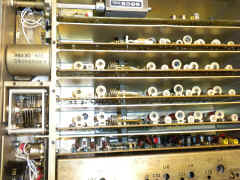


Some info in this thread
manuf by Sylvania
Manual available from www.manualman.com
In comparison with the R-390A/URR, the modernization can be readily seen. The R-1414/URR is solid-state, mechanically tuned, covers 1.5. to 32 MHz frequency range, uses double conversion, and has a digital electronic frequency counter display. Being solid-state, the R-14141/URR is smaller in size than the R-390A/URR, and operates cooler. It also has independent sideband monitoring capabilities that are not available in the R-390A/URR.
Another feature of the R-1414/URR is its frequency stability achieved by an internal digital AFC network. Both frequency stability and readout accuracy are within ±50 Hz throughout the frequency range of the receiver.
R-1451A/WLR-6
- HF Receiver portion of AN/WLR-6 ECM equipment
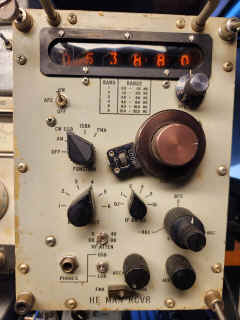
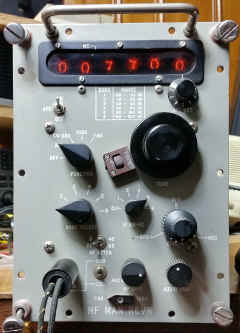
0.5-32.0 MHz
R-1490/GRR-17
- See AN/GRR-17 above -
R-2174/URR
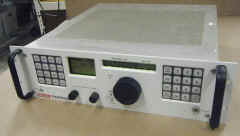
R-2307/U
(Cubic R-3030A)


- Twin receivers
- 50 kc to 30 mc range
- IF outputs of 40.455 mc and 455 kc
- Highly stable with + or - 1 PPM
- BFO of + or - 10 kc
- 100 memory channels per receiver
- Bandwidths of .5 / 2 / 4 / 8 / 16 kc
- Operating modes of AM / USB / LSB / CW / FM
- Tuning resolution to 10 cps
- IF passband shift from .1 to +/ - 9.99 kc
R-2320/URR
(RACAL RA6793A-6)
R-2368/URR

LF/MF/HF solid state


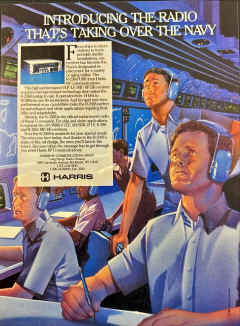
R-2411/U (Cubic R-3035)
Cubic R-3036 MF/HF Dual Receiver

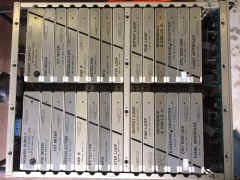
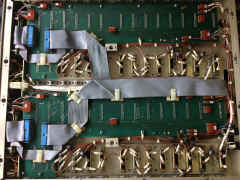
R-2557/URC
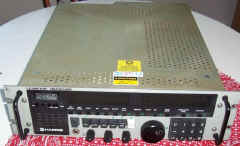
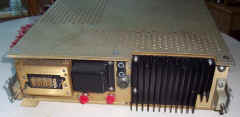
Collins 75A-4
Collins 75A-4 (Mod)
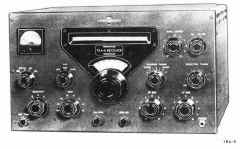
75A-4
Bands (mc)
1.5 to 2.5
3.2 to 4.2
6.8 to 7.8
14 to 15
20.8 to 21.8
26.5 to 27.5
28 to 29
29 to 30
Bands (mc)
1.5 to 2.5
3.2 to 4.2
4.2 to 5.2
5.2 to 6.2
6.8 to 7.8
13 to 14
14 to 15
29 to 30
- used by USN in early SSB tests
- other uses??
contracts:
75A-4 NObsr-71287, 27 April 1956
75A-4 (Mod) NObsr-71289, 27 April 1956
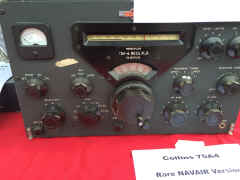
retaining clips added to this unit for airborne use.
